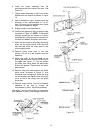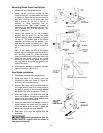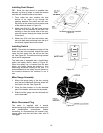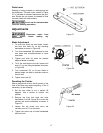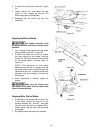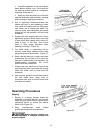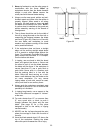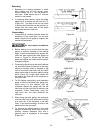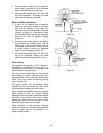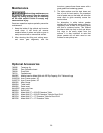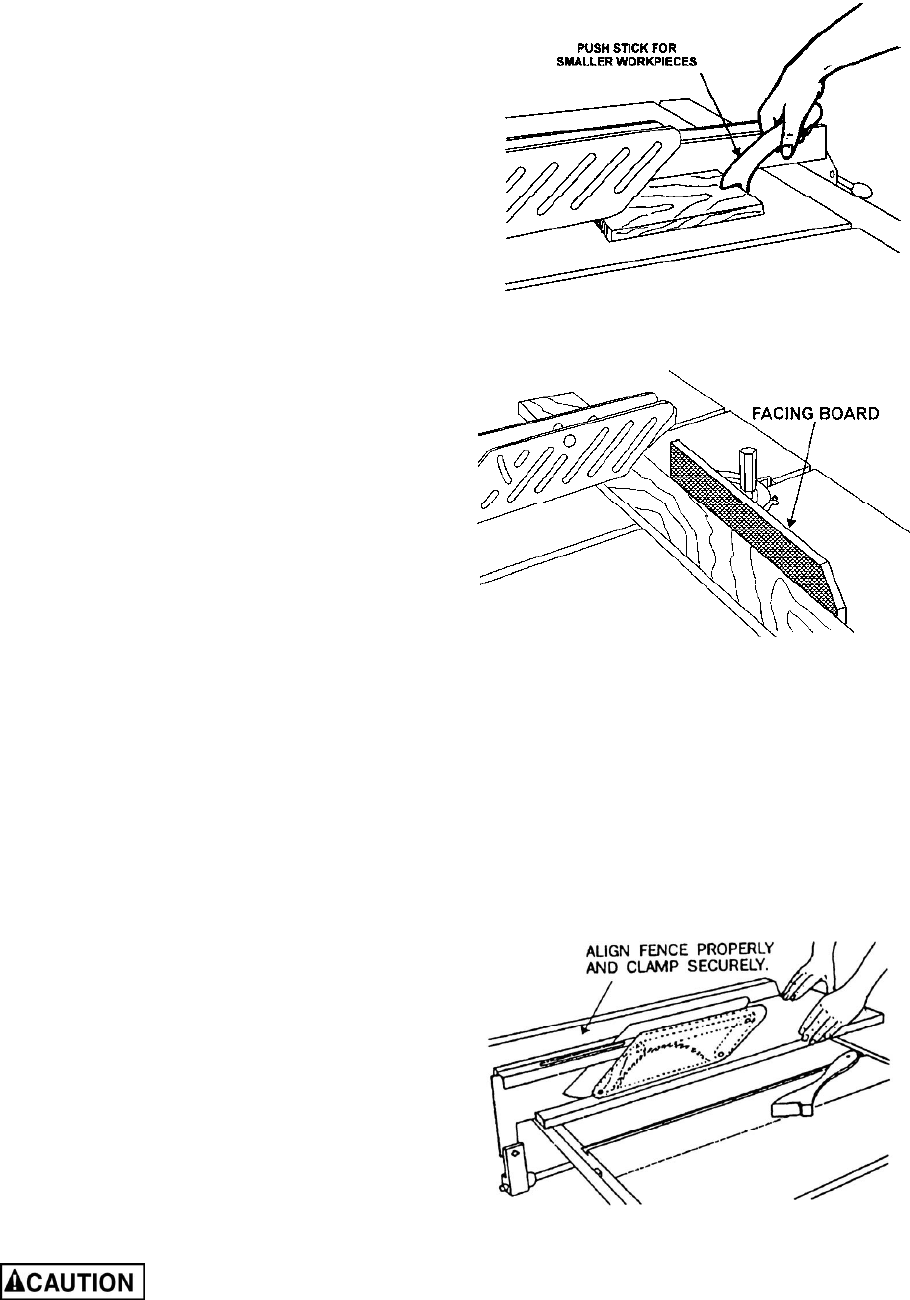
21
• Check the operation of the anti-kickback
pawls before starting a cut. If the pawls do
not stop the reverse motion of a workpiece,
resharpen all the points.
• Keep your face and body out of line with
potential kickbacks when possible, including
when starting or stopping the machine.
3. Dull or improperly sharpened blades and
blades with gum or resin adhering to them
may cause an accident with the tilting arbor
saw. Never use a cracked saw blade. The
use of a sharp, well maintained, and correct
cutting tool for the operation will help avoid
kickbacks.
4. Support the work properly and hold it firmly
against the gauge or fence. Use a push stick
or push block when ripping short, narrow (6"
width or less), or thin work. Use a push
block or miter gauge hold-down when
dadoing or molding. (Figure 36)
5. For added safety in crosscutting use an
auxiliary wood facing attached to the miter
gauge using the holes provided. (Figure 37)
6. Never use the fence as a length stop when
crosscutting. Do not hold on to or touch the
free end or cutoff section of a workpiece. On
through-sawing operations, the cut-off
section must not be confined.
7. Always keep your hands out of line with the
saw blade and never reach past the rotating
blade with either hand to hold down the
workpiece.
8. Use the miter gauge on the left hand side of
the saw blade when doing miter or
compound miter cuts to provide more hand
clearance and safety.
Operating Procedures
Ripping
1. Ripping is a sawing process where the
workpiece is fed with the grain into the saw
blade using the fence both as a guide and a
positioning device to ensure the desired
width of cut (Figure 38).
2. Many manufacturers make blades
specifically designed for this operation.
Before starting a ripping cut,
be sure the fence is clamped securely and
properly aligned.
Figure 36
Figure 37
Figure 38



